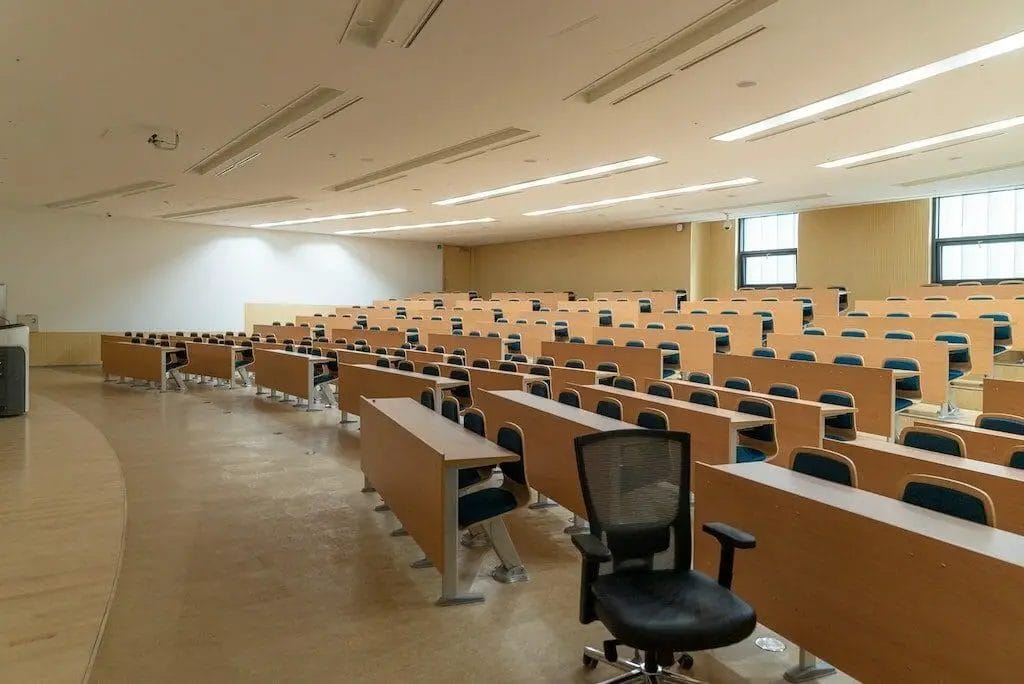Are you thinking about moving to Denmark with the rest of the family? Then it is important that you understand what Denmark schools require of the children. It is a must that you are able to settle everything before your children move in to Denmark schools to help ease up the challenges of moving to a new learning environment.
Children in Denmark are required to complete the 10-year compulsory basic education. They start school August of the year they turn six. Although younger children can be enrolled in some day care center, they are only allowed to start formal school education at the age six. This 10-year program is composed of a year of primary education, nine years of elementary and secondary education and a career-focused tenth year.
Most Danish children are enrolled in public schools where all these years of basic education come for free. However, there are also other educational institutions around Denmark where children can be enrolled in but parents need to pay for tuition. However, if you want to save on costs, you may avail of the free education that the government provides. Moreover, parents should pay attention to such services as King Essays, which can help their children cope with home tasks and be ready for tests throughout the school years.
Migrants to Denmark usually come into the country as professionals, thus they prefer to send their kids to private schools in Denmark. Most of these schools are situated in and around the large cities in the country, particularly in Copenhagen. After they attend to the primary, lower and secondary education, your kids can choose to attend to programs that will prepare them for higher tertiary education. At this point, they may also opt to work to support themselves throughout school.
Education in Denmark

Schools in Denmark has a long-standing tradition of academic excellence – in fact it was listed in the UN Education Index as among the best in the world (along with Australia, Finland and New Zealand). Literacy in the country is at a record high of 99% and this can largely be attributed to the fact that primary and secondary education is compulsory and government-funded educational institutions are free.
Education starts at pre-school and all children are given access to day care centers and kindergartens. This is followed by “Folkleskole” or primary education and lower secondary which can all be completed until the age of 16. For non-Danish speaking residents, there are a number of private and international schools where subjects are taught in other languages (typically English, French and German).
In some areas, education at these levels includes courses on Danish language. Upon finishing lower secondary education, there are several options offered for higher (upper) secondary education which are all meant to prepare the student for higher education, or university education (you can ask help on pro-papers.com).
There are about 30 colleges and universities in Denmark, with most focused on certain fields and specializations such as business, sciences, professional and vocational services or the arts. The Danish government also encourages lifelong learning for all adults and different courses and programmes are offered free to Danish citizens as well as those who come from EU and Nordic Council countries, hold a permanent resident or a humanitarian visa. In addition to free tuition, students can enjoy a monthly stipend from the government.
Denmark Shows Good Education Performance
Schools in Denmark continues its high ranking in different kinds of global survey. The latest is in the field of education.
The yearly report entitled “Education at a Glance” revealed Denmark’s good ranking in its 2009 survey. This Scandinavian country showed a high level of education among the countries that are members of the Organisation for Economic Cooperation and Development (OECD). The same report pointed out the big investment made by the Danish government when it comes to education. Among the countries surveyed, Denmark spends the most public funding in education in the OECD based on percentages of its gross domestic product or GDP.

Public funding for the education department of the Danish government accounts for 6.7 percent of the country’s GDP. For this reason, Denmark ranks higher than Sweden, Finland and Norway but is behind Iceland which allocates 7.2 percent of its GDP to education.
Denmark also puts great value on its students. In fact, it is one country in the world that spends most of its funds on the education of its individual students. And this is not only focused on one level but in all levels. Additionally, it is estimated that 85 percent of adults especially those aged 25 to 34 in Denmark have attained and completed secondary education.
The OECD 2009 report urges countries around the world to invest in higher education to help them beat the recession. The organization also believes that with this action, people who want to pursue further studies will also be well rewarded financially. As people attain higher education, they have better chances of landing in high paying jobs and gain better health. And when a crisis presents itself once more, those who are more educated will not likely go unemployed. Today, the U.S. is the country that offers male and female graduates with the highest earnings with Italy on second place.
Higher Education Teaching and Learning Style in Denmark schools
There are a lot of countries offering higher education courses to foreign students but standards and teaching style vary. In Denmark, the teaching and learning environment is best described as innovative and informal. There is much emphasis on promoting creativity and self-expression while encouraging students to practice analytical and critical thinking.
Students are expected to take an active part in their learning process instead of just passively listening in the traditional classroom style. They are expected to openly participate in discussions whether be it with teachers and co-students. Ten hours of tuition and about thirty hours of preparation, self study, and project work is just about what it would take to survive a week's schedule.
Project work and problem based learning largely comprise the big difference in higher education learning in Danish educational institutions. This focuses on application of new learning in solving real-life problems. There is also the added advantage of schools having companies and organizations as partners as they provide invaluable opportunities for internship and work experience.
Foreign students who are adept in the English language will not find it difficult to study in Denmark as most courses are being offered using the language as a medium of instruction. Undergraduate degrees usually take two to three years to finish while a master's degree will take about two. Providing state-of-the-art learning facilities is a given among Danish schools. The organized, friendly, and safe environment prevailing in the country is of course a plus factor in any learning endeavor, both for locals and foreigners.
Schools in Denmark, the 5 Best Universities

Schools in Denmark is well known for its great achievements in the information technology (IT) sector. Much of the Danes’ accomplishments can be attributed to their education. Denmark gives priority to educating its citizens and for this, it provides free education starting at the primary level and even at the higher educational levels. The country is known for its quality education which continues to attract students from other countries. In fact, Denmark’s top universities can closely compete with some of the world’s best.
Curious about the top five universities in Denmark? Here they are, according to world university rankings.
University of Copenhagen – Established in 1479, this is the oldest and biggest institution for both education and research situated in the capital of Denmark. Of the 37,000 students in this university, majority are females. Some 2,800 foreign students comprise the student population of the university. Based on the Academic Ranking of World Universities (ARWU), the University of Copenhagen is considered the leading university in the Scandinavian region and one of the 50 best universities worldwide.
Arhus University – Situated in the city of Arhus, this is the second oldest and biggest university of Denmark. Known as an elite university, this school founded in 1928 is among the Top 100 of the world’s best universities and top two in the Nordic region as of 2008. It also has an estimated student population of 38,000 including 900 international exchange students that come to the school each year.
Technical University of Denmark – Also known as DTU, this university was founded in 1829 and is located in the northern part of Copenhagen. It is considered to be the Scandinavian region’s best engineering university and among Europe’s leading engineering schools. The 2010 World University Rankings placed DTU in the 8th place in the entire Nordic region and 141 worldwide. This university also boasts of several research centers.
Aalborg University – This school opened in 1974 becoming the 5th university in Denmark. Its emphasis are on interdisciplinary and inter-faculty studies. Its faculties are divided into the Humanities, Social Science as well as the Engineering, Science and Medicine. The university’s student population is estimated at more than 14,000 with 10 percent composed of international students.
Copenhagen Business School – Also called CBS, this is one of the three major business schools in the northern part of Europe. Located in Frederiksberg in Copenhagen, CBS was founded in 1917 and has 16,000 students and researchers. Each year, it also accommodates more than 1,500 international exchange students. The school is awaiting its AACSB accreditation this year. For two straight years in 2008-2009, it ranked 22nd in the Financial Times Masters in Management Ranking.
Students Don White Cap to Celebrate Graduation
It’s official – school is over in Denmark. And for the graduates, it means a time for celebration with family and friends. In Denmark country, students there celebrate graduation with a unique tradition. They wear white caps, called Studenterhue in Danish, that look like those worn by sailors.

Danish high school students normally take to the streets wearing their white caps to mark the end of school. But it’s not just the pure Danes taking part because foreign students in the country also join in this traditional celebration. Data from the IT Centre for Education and Research revealed that 2,700 of the total 33,500 high school graduates this year are immigrants. This figure is up five percent from that the country’s 1997 data.
In the Denmark capital of Copenhagen, students have been spotted at the Kongens Nytorv Square riding on the back of a truck. After going around the streets, they gather in some place and drink their favorite food as well as alcoholic beverages.
But did you know that apart from just the merriment aspect, this start of summer vacation also symbolizes the students’ rite of passage? After school celebrations are considered a ritual expressing the patriotism of young students often connected with religious rites. It is said that during high school exams, students undergo three phases which are the isolation phase, the transition phase and the last part where they learn to integrate into their community.
And the white cap serves as a traditional symbol for this specific period in the students’ lives. The cap usually has a Dannebrog or the Danish flag cross which symbolizes the Order of the Dannebrog established in 1671 by Christian V. Another feature is a coloured band that identifies a student’s field of study.

There are also other traditions linked with the white cap. One is the belief that students who try on the cap before their last exam are in bad luck. Sometimes, students also write personal messages in the cap’s lining.
More International Schools Wanted in Denmark
Denmark is one country in Scandinavia that has a lot of employment opportunities available for qualified people from other countries around the world. For many foreign employees, Denmark is an attractive place to work and live in. This is the reason why some have decided to bring their families along to settle here for good.
Unfortunately, there are also some foreign workers having second thoughts in accepting a job and moving to this country because of a lack of educational institutions offering International Baccalaureate or IB diploma courses. This is a main concern for employees with growing children especially those about to enter high school and college.
This issue is also giving top Danish companies major problems especially in recruiting top rated employees. Business executives have actually called on the government to address the problem of international education as a way of attracting and retaining foreign workers.
A new study has found that major companies recognize the importance of international schools. The survey conducted by Heidrick & Struggles, which had human resources managers of some big Danish firms as the main respondents, ranked fifth the problem of securing a slot in an international school for the children of foreign employees. The findings were revealed during the recent International Talent Symposium hosted by the Danish Chamber of Commerce.
Another study conducted by the Copenhagen Council showed that there are thousands of waiting lists for international schools in the Danish capital. Some 2,400 children are said to be on the waiting list for international primary and secondary schools.
So far, Copenhagen has the biggest international school in Denmark which is the Copenhagen International School. Additionally, only nine high schools in the country are offering a two-year IB education which many officials say is not sufficient. An IB diploma program is recognized globally and is normally taught either in English, French or Spanish.

Be the first to comment